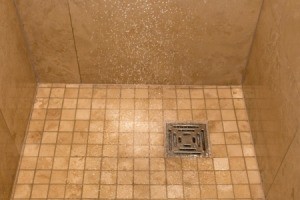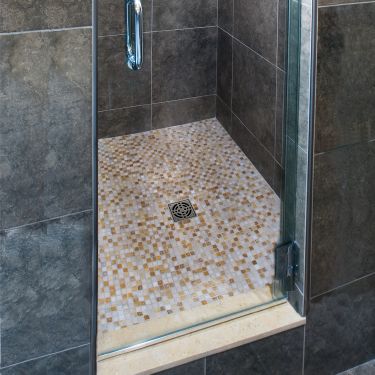How To-Guidelines for-Tips On Successfully-Effectively-Properly Handle-Manage-Execute Your Own-DIY-Personal Shower Drain-Bathroom Drain-Drainage System Installation-Setup-Project
How To-Guidelines for-Tips On Successfully-Effectively-Properly Handle-Manage-Execute Your Own-DIY-Personal Shower Drain-Bathroom Drain-Drainage System Installation-Setup-Project
Blog Article
Do you find yourself searching for selective information about How to Choose the Best Drain for Your Shower?

Updating a restroom is among the much more prominent house enhancement jobs. Dealing with the plumbing for draining your shower can be extremely easy unless you go overboard.
Handling Your Own Shower Drain Installation Task
You can literally construct an enthusiast for your brand-new shower, however you truly need to think about it. Do you really intend to get involved in the difficulties of obtaining the sloping right, and also ensuring every aspect of it is waterproof? And also I mean every facet! It is a lot easier to just purchase a pre-cast collector online or at your neighborhood Lowes, House Depot or hardware store. Structure one may sound like a fantastic idea, yet you will most likely feel in different ways after a couple of hours.
No matter exactly how you tackle obtaining a frying pan, you ought to strive to utilize one that has the drain situated in the exact same spot as the original pan. Relocating the drain pipelines can be a job, particularly if the building contractor utilized an unique framework structure. If you are established to relocate the drain, you are mosting likely to have to reduce the pipe or extend it, which may suggest ripping up large portions of the floor. Rephrase, you are going to be looking at a several weekend job.
Assuming we have our drain aligned, the actual link is fairly straightforward. The drainage pipeline should be dealing with upright as much as the enthusiast. It will commonly look like a "U", which indicates it acts as a cleanout to keep unpleasant smells from coming back up from the drainpipe. To connect the drain, you are mosting likely to create a water tight connection in between a drainpipe cap on the top of the pan as well as the water drainage pipe. Solutions differ, but you are usually mosting likely to do this by placing a coupling item on the top of the water drainage pipe. This is then covered with gaskets and also essentially screwed right into the drainpipe cap. The drainpipe cap ought to function as a locknut, to wit, it screws straight onto the combining.
The tricky part of this process is obtaining your drainpipe cap to match a watertight position in the pan. This is achieved by withdrawing the drainpipe cap once you are sure whatever fits together. At that point, you placed plumbing professionals putty around the bottom of the cap and then screw it back on. The putty should form a tight seal between the cap as well as the shower pan, which keeps water from dripping under it and also right into the mounting under the shower.
Clearly, washroom showers can be found in a variety of designs nowadays. If you acquire an enthusiast, they generally featured plumbing guidelines or the shop can keep in mind anything uncommon you need to understand. It seems complicated, however is generally quite direct. Have a good time!
Whether you are a tub or shower person, most individuals try to find shower just choices when purchasing a home. This simple reality suggests greater than a few property owners spend a weekend break updating or setting up showers in their shower rooms. Thankfully for you, it is a fairly simple procedure.
An enthusiast or pan refers to the straight surface area located at the bottom of the shower. The enthusiast typically consists of a non-slip surface area somewhat banked towards the center or any place the drainpipe is located. Combined with 3 to four inch walls around the side, the objective of your shower drain plumbing is to get the water to move to as well as down the drain.
Tips for Installing a Shower Drain Assembly
Renovating a bathroom can be exciting as well as fulfilling if you’re tackling the job DIY-style. After you cross off the bigger decisions such as tile style, paint colors, and fixtures, you’ll need to finalize smaller details – such as the shower drain. In this article, we’re sharing some tips for selecting and installing the right drain assembly for your updated shower.
What is a shower drain assembly?
Shower bases or pans typically only come with a pre-drilled drain hole. Since the pan slopes toward the drain, you should consider the placement – left, center, or right – when designing your shower. You’ll need to purchase and install a shower drain assembly that connects the shower pan to the drain pipe underneath the shower. There are a few types of assemblies, which will be covered below.
Size of a shower drain
When it comes to installing drains, size matters. The recommended pipe size for a shower drain is 2 inches, whereas most tubs use 1.5-inch pipes. Why the difference?
Shower pans are shallower than tubs, so there’s a higher risk for overflow. So, the larger pipe allows for quicker draining. If you are replacing an old tub with a newer stand-up shower, you will need to make additional plumbing adjustments to accommodate the 2-inch pipe.
Types of shower drain assemblies
There are three common types of shower drain assemblies: compression shower drain, solvent-glue shower drain, and tile shower drain. The layout, design, and materials of your shower can determine which type of shower drain assembly will work best.
Compression shower drain
This type of assembly attaches to the drain pipe with compression washers and nuts. The drain fitting is typically installed into the base, and then the base is installed into the bathroom floor. This makes compression-style drains easier to install than other options, particularly if you don’t have easy access from the floor under the shower base. Drains are available in a wide range of materials such as PVC (polyvinyl chloride), ABS (Acrylonitrile Butadiene Styrene), and brass, and can be used for acrylic, fiberglass, and steel shower bases.
Solvent-glued shower drain
Made of either polyvinyl or ABS, this type of shower drain is sealed to the drain pipe with solvent glue and silicone. Since you’ll be working underneath the drain pan, we only recommend using this type of drain if you have access under the shower, such as from a basement or crawlspace. It’s also important that you match the type of plastic of the drain with the drainpipe. If you take these precautions, you can install a solvent-glued drain assembly with acrylic, fiberglass, and steel shower bases.
Tile shower drain –
Drain assemblies for custom tile showers feature a waterproof membrane liner placed between two flanges. The tile is installed on top of the liner, collecting any water that seeps through the porous grout. A metal strainer is installed in line with the tile over the drain.
https://www.epshawaii.com/blog/tips-for-installing-a-shower-drain-assembly/

We are very focused on How to Install a Shower Drain in a Basement and I'm hoping you appreciated the blog entry. Sharing is nice. Helping people is fun. Kudos for your time. Don't hesitate to visit our blog back soon.
Report this page